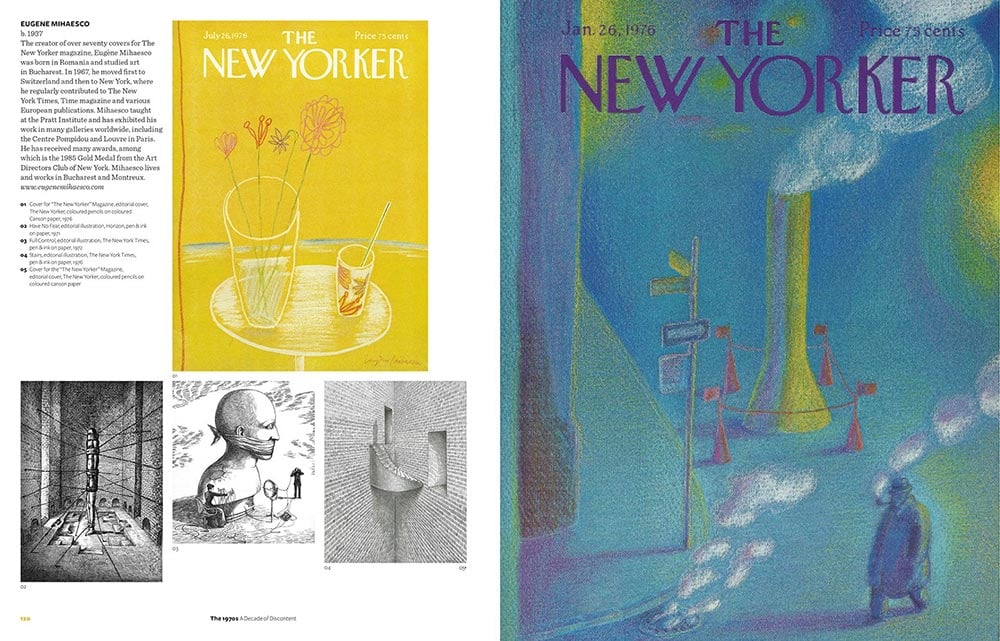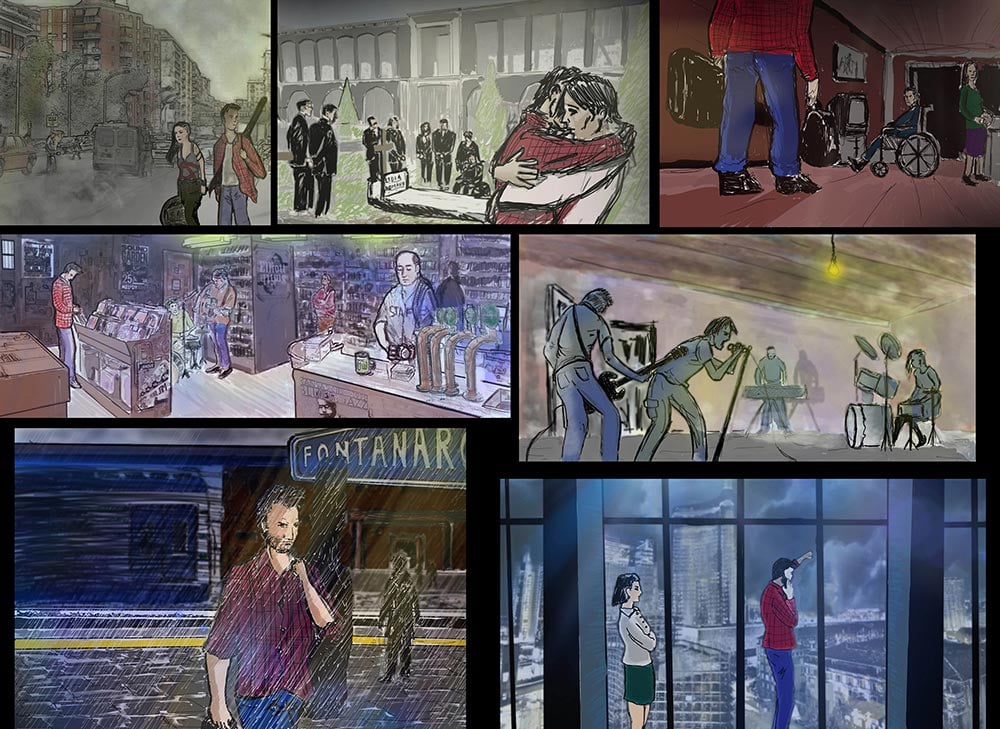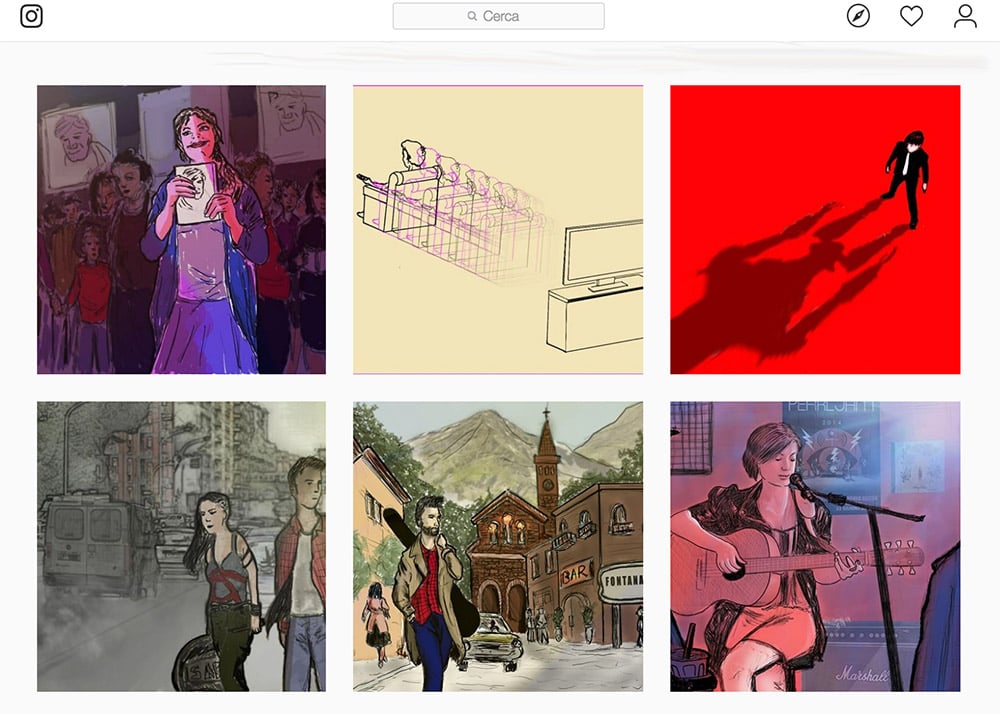Table of Contents
Making a career out of drawing and illustration is the dream of many. But not everyone succeeds in turning their passion into a job that pays the bills. Many throw in the towel, thinking they don’t have the talent or failing to overcome the first obstacles in their path. But talent is not necessarily something you’re born with: rather, creativity is a muscle that must be exercised every day.
To turn your passion into a profession, in this case as an illustrator, you need to first complete a number of important steps. So, today we’re going to set these out in a roadmap with practical advice for becoming an illustrator.
1 – Starting is the hardest part
A solid grounding in creative work is fundamental. Above all:
- Practice a lot: you need to be an expert in your field, so work on your mastery of anatomy, colour and composition every day. Taking illustration classes could be useful, but is not There are lots of solutions online, like Skillshare, which offers good illustration courses taught by successful professionals.
- Don’t ask the question, “Digital or traditional illustration?” This isn’t so Just experiment with different techniques. It’s vital to “get your hands dirty”, to make mistakes and learn from them. A finished illustration is better than a perfect one. Set yourself goals, even modest ones, like producing one finished illustration a week. The book How to be an Illustrator is a good place to start.
- Know who came before you: study illustration, both contemporary artists and past masters, to understand the styles, techniques and possibilities that this vocation can offer. Keep a copy of Fifty Years of Illustration on your desk.

2 – Understanding yourself before making yourself understood
Once you have a solid technical grounding and familiarised yourself with the work of past and present greats, a necessary but perhaps long and arduous journey begins. The first basic question to ask yourself is: who am I? The answer is by no means simple because at first we tend to copy the style of our favourite artists.
But there comes a point when you need to find your own voice, influenced naturally by those you’ve studied, but different enough to make what you do personal and recognisable, to imbue your illustrations with a strong personality.
Gradually, you’ll find out what you’re good at and enjoy doing most, be it children’s illustrations, sci-fi drawings or genre-spanning yet stylistically coherent work. This will get you noticed and help you market yourself to particular publications or advertising agencies. The goal is not to sit back and admire your work, but to understand the needs of potential clients (newspapers, magazines, agencies, events, etc.) and produce illustrations that work, and tell a clear and compelling story when paired with text.

3 – Building your own brand
Many illustrators work as freelancers: this means looking for clients and, above all, promoting your own brand so clients find you. Simply being good is not enough: you need a clear strategy to get noticed by potential clients, both online and offline.
There’s much more to personal branding than a list of clients and a portfolio – that comes later. Rather, it’s about everything that makes an illustrator: what you write, your interests, your personality. Here are some tips and tools for building a strong personal brand:
- Present a true image of yourself: that way, your followers and potential clients will properly understand the work that you show them. Branding means creating a reputation: if you’re honest with people, it will pay off in the long run.
- Be consistent: in the language you use, in the style you adopt, in the subjects you illustrate.
- Have a clear visual identity: this means you need a recognisable name and logo, business cards (here are our tips).
- Set yourself short, medium and long-term objectives: this will give you “Within the next two years, I want to get my work published in this magazine”. You might not succeed, but in trying you will have achieved something: produced new illustrations and contacted the magazine’s art director. Valuable experience for future attempts. Furthermore, this process can be shared (online and offline) to show others that you’re active.

4- Promoting your work offline
Once you’ve gained experience, chosen your best illustrations to showcase and decided on the type of client to work with, you can move on to the acquisition phase. This means letting potential clients know that you are ready to take on work. If you really want to succeed, you have to act as a business and actively seek commissions and connections with clients. In other words, call yourself an illustrator, not just an aspiring one. So, here’s some practical advice for making a name for yourself.
- Build your portfolio (and show it off): this is fundamental and needs to fully represent your ideas and style through your best work. Pixartprinting offers various print solutions such as magazines, books and catalogues. With something for every taste, the possibilities are endless: printing your portfolio professionally is crucial.
- Develop industry contacts: attend trade fairs and industry events to do some networking. Meeting people face to face can really pay off down the line. Get out from under your desk and don’t be afraid to show people who you are.
- Put your work in the hands of art directors: make a list of potential clients you’d like to work with and approach the people who call the shots. You need to know exactly what the agency or magazine does: there’s no point in making a pitch if you don’t know which problems you can solve for the client. A traditional but nonetheless effective strategy is to send short letters by post which include printed material. This could be a small unbound sheet or postcard featuring one of your illustrations to let them know you’re available.

5- Promoting your work online
Today, the Internet plays a key role in promoting your work. So carefully curating your digital presence day in, day out, is essential for your work to “blossom”. It’s a good idea to create an online portfolio of your work – perhaps even with a blog about your background and experience – so you can be found on Google. It’s also important to have a presence on at least three platforms:
- Instagram: incredibly useful and full of art directors looking for illustrators. Hashtags are key on this platform (for example #art, #illustrationtoday and many more). They give visibility to your illustrations, so they should always be used, albeit sparingly. It’s worth creating a specific account to showcase your work – and actively participate. Following illustrators you admire (here a search engine for illustrators comes in handy) and regularly posting can help a lot. Showing your appreciation of other people is also very useful: so long as you don’t overdo it, you can comment on the work of other artists using your account. Comments should be constructive, though, not simply self-promoting.
- Facebook, Behance and Dribble: these platforms can also be useful for creating a profile to show off your work. The main thing is to actively participate and regularly post material. Showcase your work, but provide context too: you don’t just have to post your finished drawings or illustrations. You can also show the process that led to the finished piece: this could be sketches or a video of you at work.
- Email: many art directors prefer to be contacted by email only. You can therefore create a list of art directors you want to approach and send them an email that includes examples of your work and links to your social media profiles. There are also paid solutions that offer databases of contacts, but you may get results by simply searching with the keyword “Art Director” on LinkedIn. Obviously, never send anything before you know everything you need to about the company you’re contacting.

Becoming an illustrator: Handling bureaucracy
As with any business, if you want to become an illustrator you’ll need to sort out the various legal and tax-related aspects.
This isn’t necessarily as simple as it sounds, so we’ll try to give you a few ideas for starters here. First of all, as soon as you start earning money from illustration, you’ll need to register your business with HMRC.
You probably don’t need to register for VAT when you first start, unless you want to – the earnings threshold in the UK is quite high. You can look into this at a later date once you are better established.
If you are thinking of working primarily in publishing, you also have the issue of copyright to think about. Contracts with publishing houses often include a clause transferring the copyright to them.
Becoming an illustrator (and keeping it up): Ongoing training
Fulfilling your dream of becoming an illustrator is an amazing achievement: congratulations! Now you’ve become an illustrator, however, you’ll realise it’s not a fixed milestone but a constant journey, tiring and exciting in equal measure!
Once you’ve started work as an illustrator, constant improvement and searching for contacts, new collaborations and ideas will be part and parcel of your everyday life. Here’s some advice on how to do it well.
- Attend workshops and training sessions: summer schools and professional courses are an excellent opportunity to continue to update your knowledge and take your work in new directions. They are also a good way to make friends and take a short break from the daily grind.
- Trade shows are another excellent place to network, see what other illustrators are doing and discover what clients are looking for. You may even meet some in person! There are many famous trade shows across Europe, including the Bologna Children’s Book Fair, as well as myriad other smaller yet equally interesting events.
- Books, magazines and libraries are excellent resources: never underestimate the power of printed media. Books and manuals can help you improve your style, while you should also include discovering, observing and analysing past masterpieces (especially hidden, less well-known designs) in your research. A trip to a relevant library or historic bookshop is always an exciting way to uncover surprises.
It’s by no means easy and not a career in which you can expect immediate success: it takes patience, hard work and a few years to develop a solid technical grounding and then build a client base, but it is immensely rewarding once you get there.



